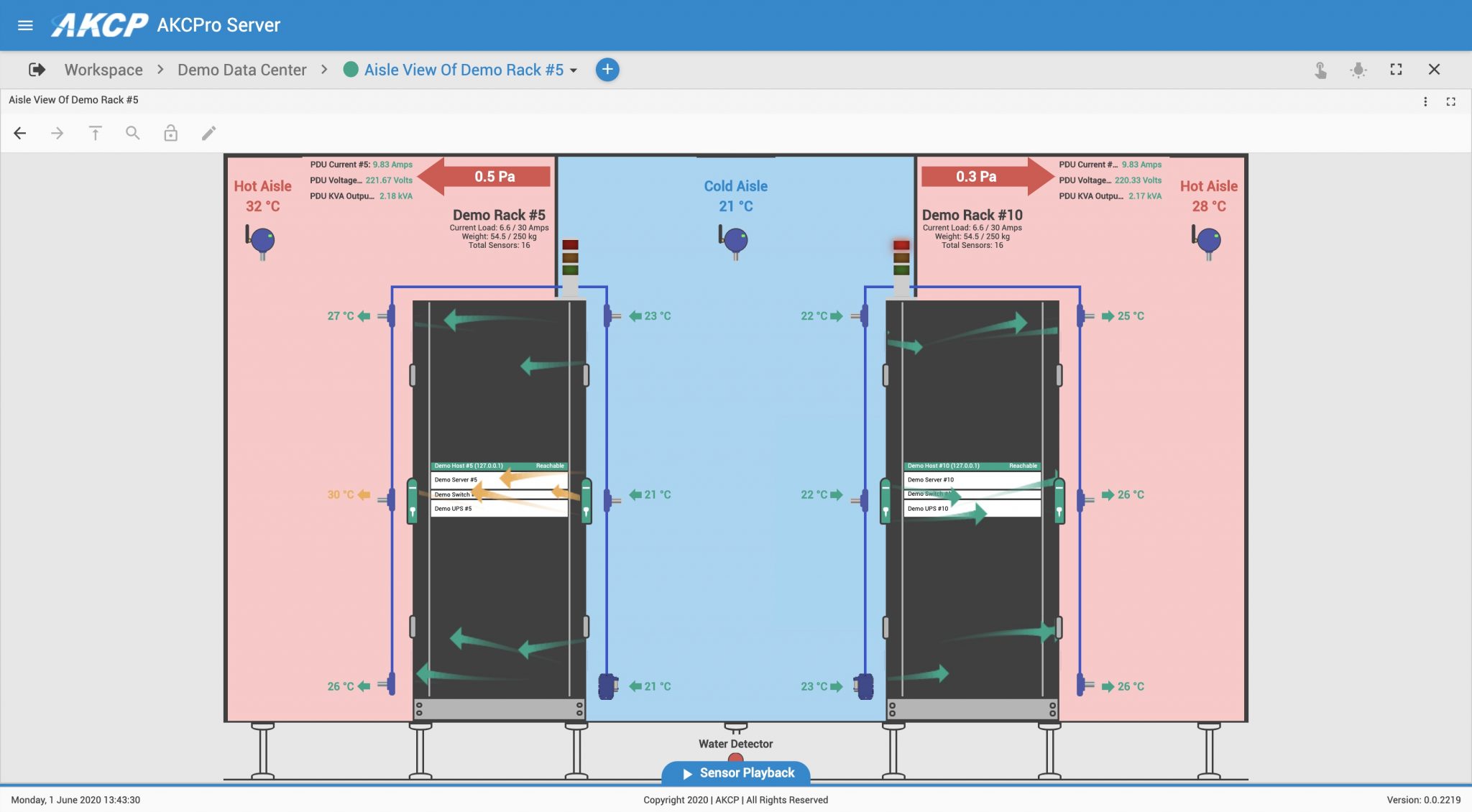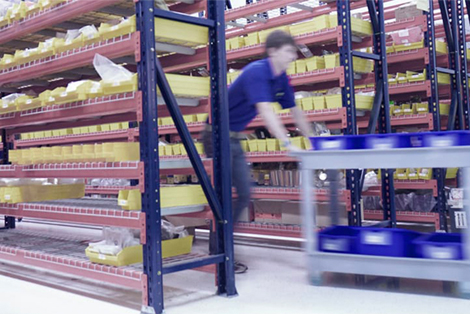Hot-Aisle and Cold-Aisle containment are strategies that separate the exhausted hot air from IT cabinets from the cold air that is cooling them. Preventing the bypass of cold air and the recirculation of hot air. Both containment methods can be equally effective, but there are advantages and disadvantages for Hot-Aisle and Cold-Aisle containment.
Cold-Aisle Containment
This method utilizes enclosed cold aisles within the data center. The cold aisles are at the front of the racks and are sealed at each end and across the top. The cold air from the cooling system is delivered directly into each cold aisle. Sometimes through underfloor distribution and perforated tiles, or through air vents in the ceiling. The containment is often built from Plexiglass, or other transparent, solid panels.
One of the benefits of using cold aisle containment is that it can be used with existing raised floors which are used as the supply cold air plenum. It is also possible to control the supply air to match the server airflow, through the use of differential air pressure sensors and variable speed fans. This offers some further efficiencies.
There are also some disadvantages to cold-aisle containment. The primary being, that the hot air is being discharged into the room, which means it can make the rest of the data center uncomfortably hot. This can lead to operational issues with non-contained equipment that may be installed in the rest of the data center.
Hot-Aisle Containment
This method encloses the hot aisles within the data center. The heat discharged from the racks enters the hot aisle and is returned through ductworks or a plenum back to the cooling equipment. The cold air supply floods the rest of the data center through raised floor perforated tiles or overhead via ductwork.

The primary advantage of hot-aisle containment is that the rest of the data center space remains cool. It also allows for low-density communications racks to be kept in non-contained areas. It also requires less management in terms of air distribution. So long as the cold air enters the main data center area and the hot air is properly returned to the cooling equipment, even if the cooling outlets are far from the servers it is still efficient.
There is an inherent disadvantage, however, and that is when technicians need to access the equipment at the rear of the rack, this is all contained in the hot aisle and it is a very uncomfortable place to work. You may need temporary cooling to be installed for hot aisles if frequent access to the rear of the racks is required.
Monitoring Solutions
AKCP offers monitoring solutions for hot and cold aisle containment. With sectional views of your data center containment aisle to visualize the current status. Slice through your aisle at any rack location, view differential air pressure between the front and rear of the racks, thermal maps, ∆T values, hot and cold aisle containment values. This data can be used together with power meters to check your PUE numbers, and fine-tune your data center for maximum efficiency.






